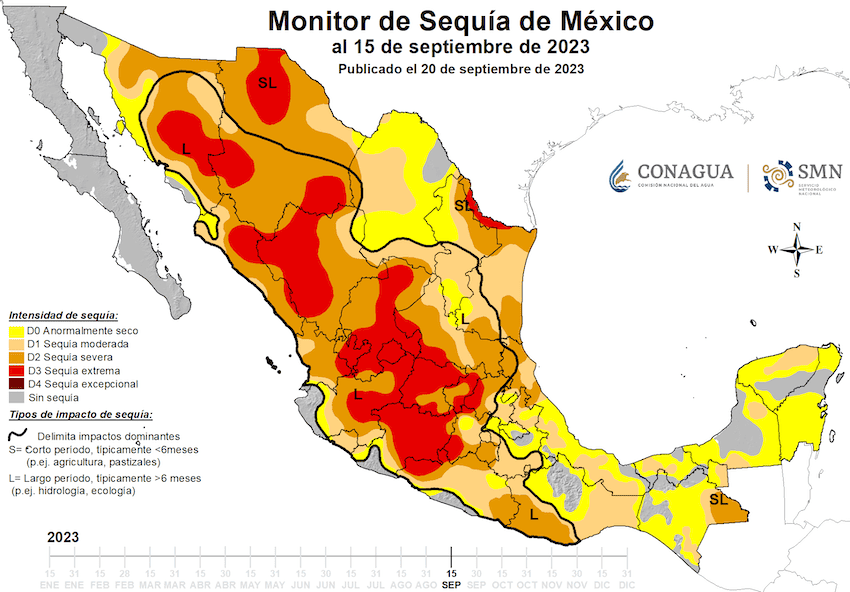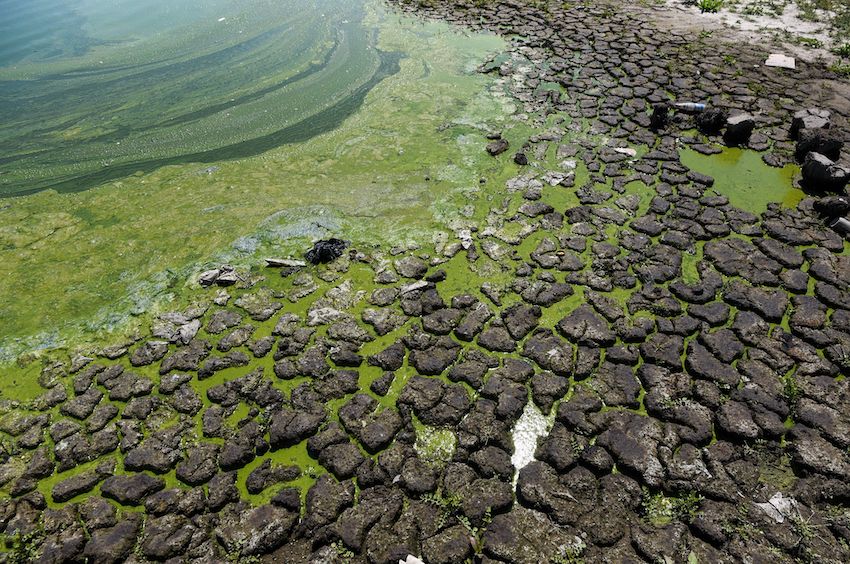Two thirds of Mexico is now in a state of drought, after a year plagued by heat waves and abnormally low levels of rainfall.
According to Mexico’s Drought Monitor, updated every two weeks by the National Meteorological Service (SMN), 67.1% of the country was experiencing some degree of drought on September 15. This is the highest proportion for that date since the record began in 2014, and almost five times higher than the figure of 14.3% registered on the same date in 2022.

The Drought Monitor is based on several different criteria, which measure not only rainfall but also factors such as soil moisture and stress to vegetation.
Extreme drought (denominated “D3” by the monitor) was registered in 17.9% of the country in mid-September, particularly in the central states surrounding Mexico City and northwestern states such as Durango. 451 municipalities were affected, up from 315 just two weeks earlier.
Meanwhile, 28.9% of the country was suffering from severe drought (D2) and 20.3% from moderate drought (D1). A further 18.4% of the national territory was not in a state of drought, but was facing “abnormally dry” conditions (D0).
Thirteen of Mexico’s 32 federal entities were suffering some degree of dry conditions across the whole of their territory: Chihuahua, Mexico City, Durango, Guanajuato, Hidalgo, México state, Morelos, Nuevo León, Querétaro, San Luis Potosí, Sinaloa, Tamaulipas and Zacatecas.

Only 194 of the 2,471 municipalities registered were unaffected by dry conditions, while the only two states to escape drought altogether were Baja California and Baja California Sur.
The alarming report reflects a year of remarkably low rainfall in Mexico. Between Jan. 1 and Sep. 17, 2023, the SMN reported an average rainfall level of 401.3 mm across the country, 28.1% less than the average for the period from 1991-2020.
The low rainfall was caused by an anticyclonic system, characterized by persistent high atmospheric pressure, which was also associated with Mexico’s multiple heat waves this year. Conditions could get even worse over the coming months, as Mexico’s rainy season is expected to end next week, reducing hope of rainfall.
Mexico has seen several consecutive years of poor rainfall, causing increasingly severe water shortages across the country. Last month, the National Water Commission (Conagua) reported that Mexico’s per capita water supply declined by an average of 30% between 1996 and 2020, to 240 liters per day.

This followed a warning by the nonprofit Water Advisory Council (CCA) in March that Mexico’s water stress will likely cause social and economic conflicts over the coming years if not addressed. The World Resources Institute ranks Mexico 26th for water stress globally.
With reports from Reforma, El Economista and Medio Tiempo
